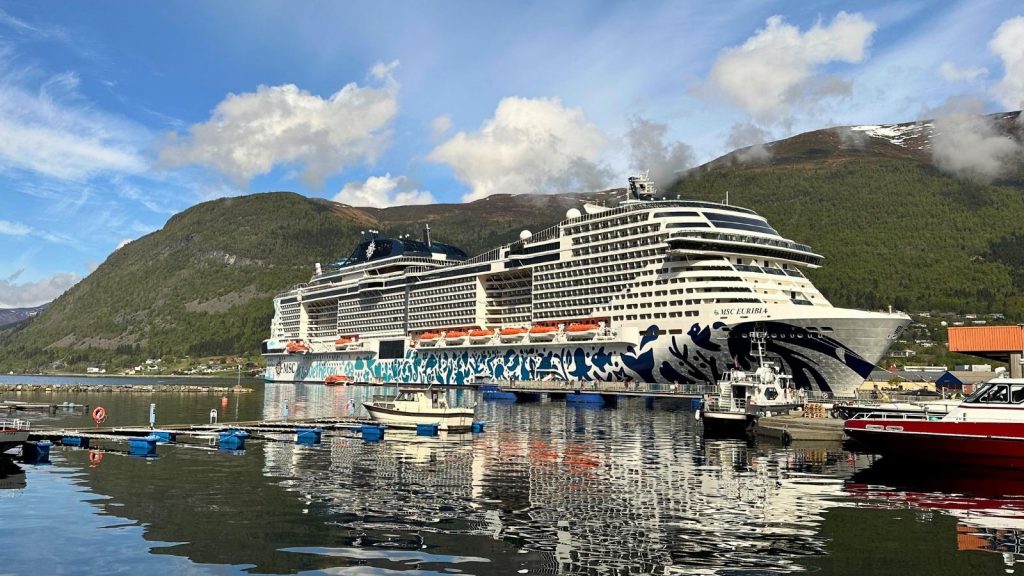For decades, travelers looking for a taste of traditional first-class cruise travel have flocked to one line in particular. Cunard is often described as the last remnant of the ocean liner era, complete with separate dining rooms and a refined experience for suite guests.
It is a model that evokes another century, when social class shaped your stateroom, your dining companions and even the deck you were allowed to walk on.
Yet the idea that class-based cruising disappeared everywhere else is only partly true. In reality, something interesting has been happening across modern cruise ships.
The return of “first class” is already here, only it looks less like velvet ropes and more like private sanctuaries hidden inside the ship. Across the industry, cruise lines are creating what are essentially small boutique hotels enclosed within much larger, busier vessels.
These spaces go by different names, but share a common purpose: to offer privacy, calm and personalized service to travelers who want both the scale and entertainment of a big ship, but not the crowds that come with it.
This revival has emerged quietly, without any language of hierarchy. There are no overt class labels. Instead, the premium experience is accessed through a keycard that opens doors many guests will never even notice.
Luxury has not vanished from mainstream cruising. It has simply become more discreet.
A Short History Of Cruise Travel
For most of the 20th century, large passenger ships were physically and socially divided. Travelers purchased first class, second class or third class passage, each with its own dining rooms, lounges and promenades.
The higher your ticket, the more space and privilege you received. This was normal. It mirrored the railroads, hotels and restaurants of the time.
When the modern cruise industry emerged after World War II, that hierarchy began to soften. By the 1990s, as cruising became a mass leisure product, large ships were marketed as democratizing.
Everyone ate at the same buffet. Everyone swam in the same pool. Everyone saw the same shows. Luxury travelers, in turn, drifted to dedicated small-ship lines where the entire experience was designed around them. For a while, the model worked. But cruising has changed again.
The Age Of The Private Enclave
Today’s largest cruise ships can carry more than 6,000 passengers at a time. They are floating cities with water parks, megashows, casinos and broad promenades. For many travelers, this is all part of the fun. For others, it can feel overwhelming.
The response has been the rise of the private, gated “ship within a ship” offered by several cruise lines.
MSC Cruises operates the Yacht Club, a fully self-contained suite enclave with its own lounge, restaurant, pool deck and bar, along with concierge and butler service. Guests are free to enjoy the full scale of the ship whenever they choose, but return to a quiet, residential-feeling space that sits apart from the busier public decks below.
One notable difference in MSC’s approach is the range of stateroom categories within the Yacht Club itself. While other cruise lines reserve their enclaves exclusively for top-tier suites, MSC includes everything from spacious suites to cleverly designed interior cabins.
The result is a premium “ship-within-a-ship” experience at a noticeably lower entry price than most competitors. TimeOut’s Erica Lamberg called the package “remarkable value” and highlighted the experience of being “fast-tracked through everything” from boarding to leaving the ship for excursions.
Norwegian Cruise Line offers The Haven, a similar enclave with a private courtyard, concierge, sundeck and dining room. On many ships, it sits at the very top of the vessel, creating a feeling of a small residential neighborhood above the action below.
Celebrity Cruises markets The Retreat, a suite-only area anchored around a stylish lounge and sundeck, along with Luminae, an exclusive restaurant serving menus created by Daniel Boulud. Other cruise lines are experimenting or simply watching the trend closely.
And of course, Cunard continues to offer its Queens Grill and Princess Grill restaurants and lounge spaces. That model never went away. The rest of the industry simply left and has now returned to something familiar, but framed in modern travel terms.
The Quiet Future Of Luxury Cruise Travel
It would be easy to describe this as a return to old-world class division, but that misses the shift underway. This is not about separating travelers by social category. It is about creating quiet spaces that feel small, calm and effortless inside ships that are otherwise large and busy.
Privacy at sea is no longer about prestige. It is about relief. The modern suite enclave allows guests to enjoy the scale of a big ship while returning to something that feels more personal.
Travelers no longer need to choose between a small luxury vessel and a large resort-style cruise. They can have both at once.
As cruise ships continue to grow, the demand for these premium micro-environments will likely grow too. What was once a niche product has become a key revenue driver. New ships currently under construction include expanded or redesigned suite enclaves from the keel up, rather than inserted after the fact.
Luxury at sea has not disappeared. It has simply moved to a quieter part of the ship.

